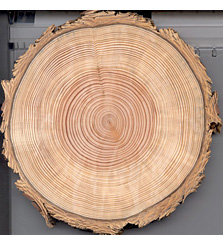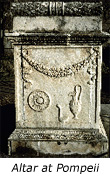 |
|||||||||||||||||||
 |
|||||||||||||||||||
 |
|||||||||||||||||||
|
|
|||||||||||||||||||
 |
|||||||||||||||||||
|
All objects were created on a particular date, but the date of origin may not be the most important date in an object's biography. For example, I live in Seattle and use my grandmother's china that was made in Boston about 80 years ago. It came from my mother's house in New Hampshire. There are multiple dates of significance in the life of this china. Determining such dates allows us to consider change in human society over time. Some objects have dates written on them, revealing when they were made. Other objects may have names of identifiable historical figures, such as a ruler under whom a coin was minted, which allow fairly precise dating. Or perhaps a later owner added an inscription. Some objects were inventoried by owners on dated records that indicate when and how the object was acquired.
More commonly, archaeologists must use other techniques for dating, some of them involving sophisticated modern technology. Where significant amounts of wood have been preserved, a dating scale based on the widths between tree rings allows us to date newly discovered pieces of wood. Much less precise, with a margin of error of several centuries, is dating by measuring the decay of radioactive carbon 14 found in organic material.  Fortunately, you do not have to cut down trees or invest in high tech dating devices. Unless the object you are studying is one you yourself have found, there is likely already a history of the object that you can work from. An archaeologist or historian has probably already dated the object with some degree of certainty for you. Thus, your task is often to situate your object within a society at a particular moment and to use it, along with other objects from that society, as a way of understanding change and development over time. Start by looking at available records and try to map out various owners in different times, thinking of the possible significance for each owner. |
||||||||||
|
finding world history | unpacking evidence | analyzing documents | teaching sources | about |
||
 Unfortunately, many objects come without such information. These objects are more challenging, but still may be dated by surroundings or historical events. A layer of ashes in a town site may correspond with a volcanic eruption or to the town's destruction by an invader. The city of Pompeii (near Naples, Italy), in a rare example, was buried by an eruption of Mt. Vesuvius in 79 CE. Life in Pompeii stopped, and objects found under those layers of ash were there prior to 79 CE.
Unfortunately, many objects come without such information. These objects are more challenging, but still may be dated by surroundings or historical events. A layer of ashes in a town site may correspond with a volcanic eruption or to the town's destruction by an invader. The city of Pompeii (near Naples, Italy), in a rare example, was buried by an eruption of Mt. Vesuvius in 79 CE. Life in Pompeii stopped, and objects found under those layers of ash were there prior to 79 CE.